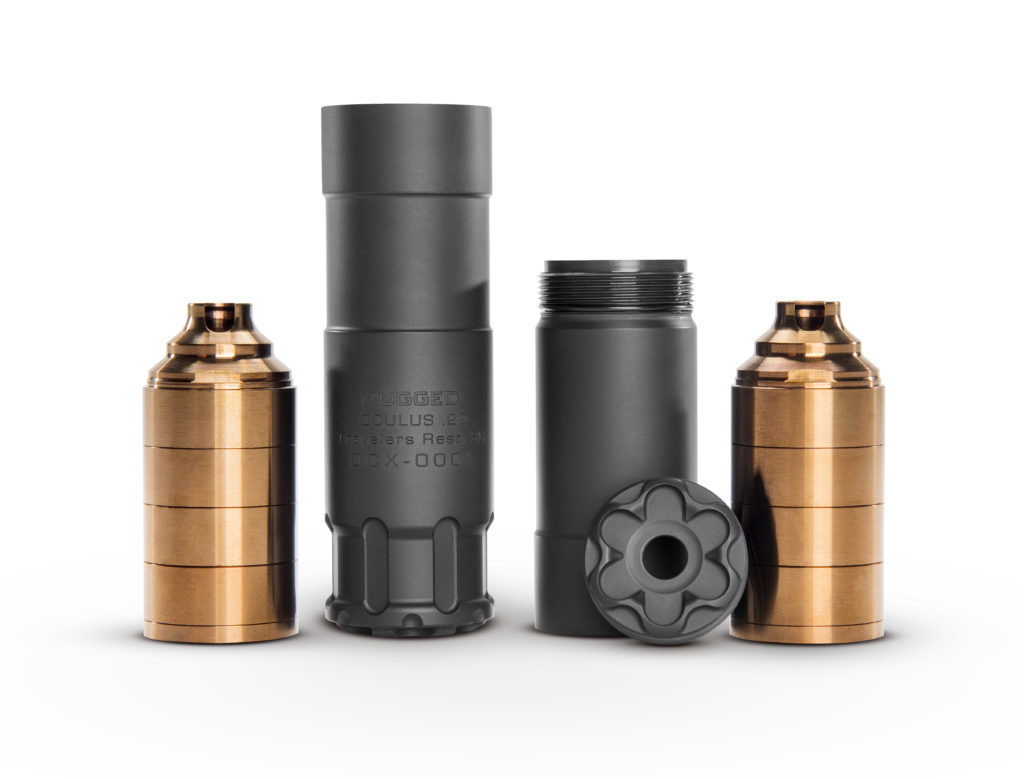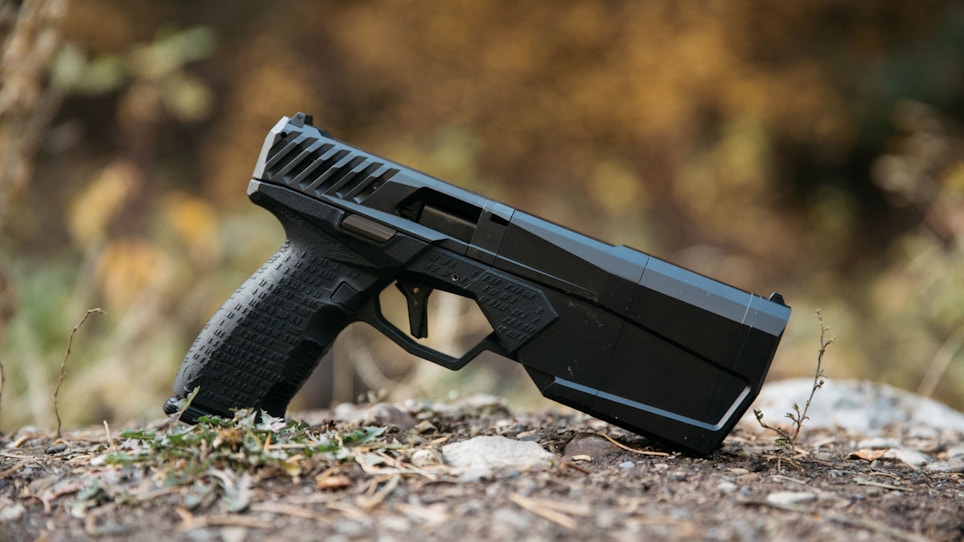Though the rush for firearms may seem like the market is in an adjustment period, controlled National Firearms Act (NFA) regulated items such as suppressors and short barreled rifles are still seeing steady growth. These items have become the new accessories for new and old firearms owners alike, but for FFL dealers, the sales and stocking process can seem difficult and costly. Silencer Shop makes it a mission to make it easy for customers and dealers to purchase and process NFA sales.
SilencerShop.com was the first distributor to offer customer sales directly from its in-stock inventory and the first to offer in-store sales and fingerprint kiosks. These sales processes were created to make sales easy and more profitable for the dealer and simpler and faster for customers. Tactical Retailer had an opportunity to talk with the Gary Groppe, the COO of SilencerShop.com.
TR: For those current FFL dealers, how can they start selling suppressors and other SOT items?
GROPPE: NFA-regulated items are controlled by the ATF and thus require a dealer to have a Special Operations Tax (SOT) license in addition to the FFL. If the FFL is not SOT-licensed, then they would need to apply for an SOT which is approximately $500 per year. The process is widely regarded as being an easier application process than the FFL license, but it is more expensive. Once a dealer has their SOT, they can start selling NFA-regulated items such as suppressors, machine guns, any other weapons (AOW) and short barreled rifles (SBR).
Dealers can start stocking NFA-related products at that point and/or take advantage of our program, which allows dealers the opportunity to sell suppressors, SBRs and machine guns all without stocking the items. Our program also helps both the dealer and customer simplify the paperwork and deliver a high potential for reducing the overall processing times due to our deep inventory.
TR:What is the sales process for suppressors for a dealer?
GROPPE: It really is the same basic process for all ATF-regulated items including suppressors. The dealer would manage the process of the customer completing the paperwork to complete the purchase. This includes purchasing and paying for a particular ATF-regulated item, filling out the paperwork and fingerprint cards, sending LEO notifications, paying the tax stamp fee, sending in the paperwork and wait … and wait. Once the ATF tax stamp comes back from the ATF in usually six to 12 months, the dealer completes the sale and the purchase paperwork, and then the customer has their suppressor, for example.
The challenge is that after the newer regulations were added, fingerprint cards must be provided for each individual and each responsible person on the firearms trust and LEO notification was added for everyone. This can be a huge pain to get all of this completed, even if it is just a husband and wife on the trust. Our kiosk system simplifies the process down to needing to capture fingerprints only once, and then copies are made going forward. Even if all the responsible persons on a trust are in different states, and even if they all capture fingerprints on different Silencer Shop kiosks, all the fingerprint cards can be consolidated.
TR: Do dealers need to have a Silencer Shop kiosk to be one of your dealers?
GROPPE: Absolutely not. Dealers can still leverage our full line of services including dealer micro-sites where they can price and sell direct online to customers, leverage our inventory for sales and use captured fingerprints of customers on Silencer Shop’s national network of kiosks to complete customer sales. Customers can still complete fingerprints via other local kiosks, in dealer stores with trained fingerprinting staff or via the local LEO office. Non-digital fingerprints are sent into us and are scanned digitally into the system for future orders and treated going forward just like a digitally captured fingerprint kiosks. The end result is less re-work for customers on future sales/purchases.
TR: How many Silencer Shop kiosks are there throughout the United States?
GROPPE: Currently, we have the initial rollout of around 350 kiosks completed with full coverage across the U.S. The initial rollout installed kiosks into both strategically located areas as well as in larger high-sales volume SOT dealers. There is an investment for the dealer, which is about $5,000 for the kiosk. In the past, we have been able to offset all or a portion for the dealers with marketing funds, products or a discount on the kiosk. Though we would like to expand the number of kiosks, new dealers should be less worried or focused on investing in the kiosk since we already have a really good convenient coverage in almost every zip code around the U.S. As we move forward, there will be location shifts on where the kiosks are placed to assure we are providing the best coverage for customers possible.

The Rugged Suppressor Oculus can be configured in a long or short configuration.
TR: It has often been noted that NFA items deliver higher margin opportunities for retailers.
GROPPE: This is even more true now as we face a glut of firearms in the market and we are all watching standard firearms margins erode. Firearms margins are typically down to a 10 percent margin according to many retailers. On the other hand, NFA items such as suppressors usually generate 20 percent or higher margins. Another aspect of sales margin often overlooked is carrying cost. Most SOT dealers hold a lot of inventory, which may not be the right suppressor the customer is looking for. Our dealers leverage us as their SOT distributor and can reallocate the money they were using for suppressor inventory for other areas of their business.
TR: It is my understanding Silencer Shop is one of the largest NFA distributors.
GROPPE: We are generally regarded as one of the largest. We usually have well over $3 million in suppressor stock at any one point with millions of dollars of suppressors on order with manufactures, as well. This offers benefits to customers and dealers in several ways. Instead of a customer needing to endure an additional wait for a backordered or non-stocked suppressor and pre-wait for a suppressor to become assignable to start the paperwork, dealers can sell and assign NFA items directly from our inventory right to customer NFA tax stamp paperwork the moment they walk in the store. Once the dealer notes the purchase and paperwork have begun, we initiate the ATF clearing and transfer of the NFA item to the dealer in parallel to the customer’s paperwork being processed. Generally, customers and dealers are very happy about this Silencer Shop service which can cut processing time in half.
TR: How would the Hearing Protection Act (HPA) progresses impact dealers who are part of the Silencer Shop program?
GROPPE: When and if the HPA passes, there is expected to be a huge surge of sales. The problem is that the current manufacturing volume could not handle that initial demand. The suppressor market is still relatively small; run and operated by fairly small companies with limited capacities. Even the largest manufactures have demonstrated over the past two years that they simply cannot keep up with regular sales spikes and backorders are a constant expectation of these products. There are large companies now introducing suppressors, which might help alleviate these sales spikes, but customers usually want a specific model.
We would expect that in at least the first two years after passing some version of the HPA, it is likely only existing legacy NFA distributors and dealers would have the relationships to get product regularly. Our dealers would have the ability to take advantage of that sales burst right away. New dealers hoping to jump into suppressors might find it really hard to get suppressors and even short barreled rifles unless they have an existing relationship with NFA items manufacturers and distributors.
TR: What do you see as the biggest challenge for dealers and consumers?
GROPPE: Notably, the biggest problems with NFA item sales and purchases is the current paperwork process and the wait times. There is now an extra requirement for law enforcement notification on top of the quadruple copies of the tax stamp application. The needless NFA fees are annoying, but the wait time of approving transfers to dealers and customer paperwork is the most cited pain point for dealers and consumers. Whether HPA passes or not, dealers will find that the process will be faster and easier working with us.
Even if a dealer is stocking suppressors in the store, customers always seem to want something that is not in stock, which potentially means a very long wait. If a suppressor or SBR is backordered at the manufacturer, which they usually are, there’s a wait for that. Then, there’s a wait for the ATF to clear a transfer from the manufacturer to a dealer, and then of course the standard customer paperwork and the wait attached to that process. Some customers can easily wait over 18 months for an NFA item that is not in stock at the dealer. Our process allows our dealers to sell an item right out of our stock. The transfer to the dealer occurs while the customer paperwork is clearing through the ATF.
TR: What would you tell dealers who are interested in selling NFA items?
GROPPE: At the moment, it appears the HPA is on hold and customers are still purchasing NFA items including suppressors. If a dealer has the tactical and hunting buyer foot traffic, which are the target for suppressors and SBRs, then the small $500 investment in a SOT license can further increase that in-store traffic and add incremental sales, which can easily pay for the licensing. Most dealers are surprised to find that NFA item sales can become the highest growth and most profitable part of their business.
Featured image: The Silencerco Maxim integrally suppressed Glock 17 magazine-capatible pistol.






